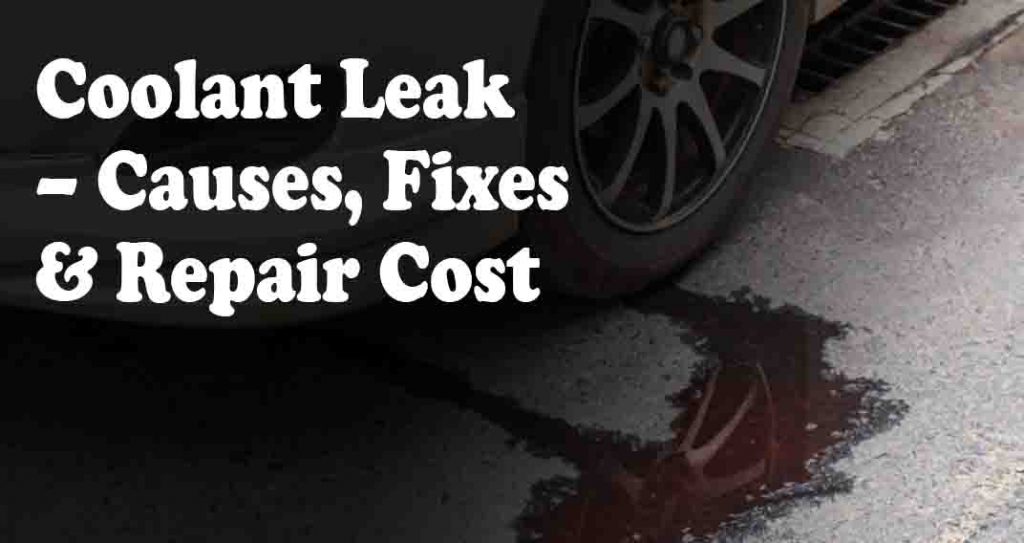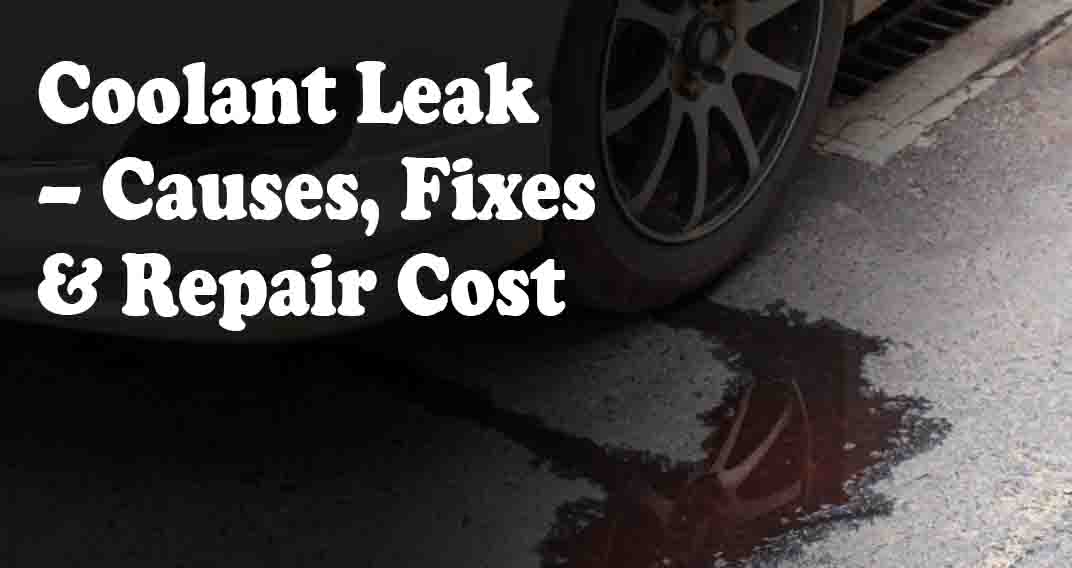Is your car leaking coolant? This post will teach you the causes and how to fix a coolant leak. In addition, we’ll tell you how much it will cost to repair. Nothing is more alarming than heading out to your car in the morning and finding green liquid pooling underneath.
The first thing you should do after getting a terrible deal on a car is to go home, calm down and think about what’s really going on. If you’ve got this problem, however, it is often caused by a couple of different issues.
There might be a fix for that coolant leak. It might be something simple you don’t know about. This article discusses the most common causes of coolant leaks. Repairing a coolant leak is relatively easy; however, fixing it properly is sometimes tricky.
Table of Contents
5 Causes of Coolant/Antifreeze Leaks
A radiator hose that doesn’t hold air pressure and a leaking radiator are the most common causes of a coolant leak. Water pump or expansion tank failure is the most common cause of hot tub heater failure. It’s also very common to find leaks around hose clamps and from cracks in plastic tubes in the cooling system.

Here’s a more detailed list of the possible causes of coolant leaks:
Hole in Radiator
The radiator is subject to a lot of abuse, sitting at the front of the vehicle the way it does. Corrosion is one of the main reasons that a radiator fails, so it’s important to protect your radiator from the elements.
This leaking could be caused by a worn gasket. Simply replacing the gasket will fix the issue. There could be a leak in one of the hoses connected to the radiator. Over time, these hoses become brittle and simply fail.
Leaky Radiator Cap
You might not think that this small cap can have an impact on the cooling system. The radiator is full of pressure, and the cap holds it all in.
In a properly installed and functioning pressure regulator system, the valve seals are designed to create a strong, reliable seal that allows the water to run optimally. This is why the seal to this cap starts to deteriorate, so that coolant can seep out.
Blown Head Gasket
Cooling systems keep the engine from overheating and breaking down. It may be hard to notice that the leak is happening because there may be no outward signs. But there’s a difference between the coolant in the engine oil and vice versa. You will also see the engine temperature rise. Eventually, the coolant will leak, indicating a serious problem.
Failed Water Pump
This part, which is called a “water pump”, is responsible for circulating the coolant through the system.
The water pump usually runs off the crankshaft. In fact, this is where the word “pump” comes from: It’s because the “pump” is driven by the engine. If the pump isn’t working right, the coolant can’t flow properly, which will cause the engine to overheat.
Defective Expansion Tank
Next to the engine, you’ll see a plastic container that holds coolant. It connects to the radiator with a hose. It’s primary function is to feed coolant to the radiator. However, the plastic is becoming weaker over time. If you’re using this product regularly, you’ll likely find it needs replacement sooner rather than later.
How to fix a Coolant Leak
Since there are many different issues that can cause an antifreeze leak, there are also many things you can do to fix the leak. When it comes to leaky faucets, we do always recommend replacing the leaking part, but there are a few other things you can do.
Use Sealer
If you are stranded in the middle of nowhere and your radiator is leaking, you should stop and fix it before it causes a disaster. If you have some eggs in the trunk, you might be able to buy yourself some time. It’s unlikely that you’ll find a fix for your problems without spending a lot of money, but this repair option is generally considered to be a last resort.
It is best to let the car cool for a bit and then remove the radiator cap to help the cooling process. Crack some eggs and put them in the radiator reservoir. If the leak doesn’t stop, you might need to try a few more eggs. The hole in the chicken may become clogged, and if all goes well the egg should be fine until the next time it rains.
However, this may also damage the engine and can cause other issues. There are also special additives that work on cooling-system leaks instead of using eggs. Some reports say that these coolers get clogged because people use them. So, be careful. Whether you have an old car that’s not worth fixing or not, it can still be worth trying.
Replace Clamps
All of the hoses are held on with clamps. If one fails, you’ll need to replace it. Locate the defective cooling pump, and if it is still under warranty or can be replaced easily, locate the defective parts and replace them.
You’ll want to remove the old hose and the old clamp. Put the new hose and the new clamp on and make sure it’s tight. You should fill up the radiator with fresh coolant, but you shouldn’t tighten down the cap. Drive your car until it reaches normal operating temperature. Check the repair to ensure no more coolant is leaking.
Replace Hoses
To replace an outlet, you’ll need to follow these steps. To find the clamps or hoses, turn off the power and wait for the air to stop coming out of the vents.
Drain the coolant into a bucket if it’s near you. Unclamp the hose. If the hose becomes damaged, replace the part and secure it back in place. Fill your car with fresh fluid, check for leaks, and then start the engine to see if it runs properly.
Swap out Radiator
Most radiators are installed in different ways, depending on which style of radiator the manufacturer uses. Some of the most common steps for a radiator replacement are similar for every installation. It is best to allow the car to cool and unplug the car battery.
Drain all the coolant from the system by removing the radiator. It’s important to ensure that you dispose of this coolant properly. There’s a fan mounted to the radiator. It’s probably best to remove that fan. Remove the bolts holding the radiator to the engine.
Unplug the old radiator and install a new one. You need to replace the worn-out part first, before putting the whole thing back together in reverse. If you want to be able to drive a vehicle, you need to make sure it is well-oiled.
Coolant Leak Repair Cost
The cost to repair a coolant leak is anywhere from $10 to $3,000. A new clamp or hose is usually cheap. Repairing a radiator might cost between $300 and $1,200 for parts and labor, while replacing a head gasket can easily cost $2,000 or more.
If you’ve got an inexpensive coolant leak in your vehicle, then it might be time to have it repaired. While it will not prevent any expensive damage, a minor coolant leak can quickly turn into a bigger problem if left untreated.

